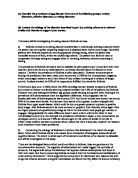Schools of Though
Sigmund Freud is credited for the first coherent and scientifically valuable theory of narcissism. This theory belongs to the Psychoanalytical school of thought. According to Freud, narcissistic feelings appear at an early stage of life, as soon as infancy. The child’s parents are also an object of these emotions, and are, according to psychoanalysts, viewed as omnipotent beings, but exist solely to care and nurture the child, whose self-view is even more grandiose than the parents. If the view of the parents becomes disturbed, by such things as domestic violence, the child uses an unconscious defense mechanism that deflects the trauma of its experiences. The child then shift focus from the true self-awareness to a false self-awareness where the child sees itself as omnipotent and invulnerable. These emotions later develop into pathological narcissism
Another psychologist; Karen Horney thought further about Freud’s ideas. She agrees with Sigmund Freud about children’s narcissistic feelings of themselves and their parent. However, she claims that pathological narcissism is a defence mechanism that is the result of the realization that the parent is not omnipotent, but can be unfair and undependable, ergo human.
Heinz Kohut disagreed with Freud, and said that pathological narcissism is not a result of excessive concepts of an omnipotent self. Instead, Kohut claimed that pathological narcissism is the result of deformed or lacking narcissistic self-structures. These constructs were named Grandiose Exhibitionist Self. This self-concept is a reaction to parental stimulation. Kohut’s School of Thought says that these responses are part of making us healthy adult with ambitions and ideals. This is called the Object Relations school.
Otto Kernberg is also part of the Object Relations school. He claims that the division between energy directed at people and energy directed at the self determines narcissistic behavior. This is dependent on the child’s relationship between the representation of the self, or with objects. A child that diverts focus from objects and self alike, to only the self will probably develop a Self (Or Ego, as Freud called it) that is fixated on aggression. This, according to Kernberg, proves that pathological narcissism does not develop passively, but is an active investment in a deformed self-structure.
The narcissist and his relationships
Pathological narcissists are socially inept people. They have very few ways to interact with other human beings. The main way a narcissist uses an individual is to satisfy the self. The narcissist is dependent upon the individual to give them praise and compliments, which are used to fortify the false self-image of omnipotence. In rare cases, this behavior takes a more sinister turn in which it can manifest as gross criminal behavior such as rape or child molestation.
The narcissist can not take criticism, whether or not it is destructive or constructive. A pathological narcissist feel injured and humiliated when criticized and often become angry. However, although some narcissists do not hide their feelings, most try to do so by feigning modesty and humility. This resentment towards setbacks of any kind and disagreements makes hit hard for the narcissist to work with other people, or play in sports based on teamwork.
Closure
It should be stressed that there are few narcissists who are alike. Some are healthy narcissists, some suffer from NPD. Some are cerebral narcissists, who rely on academic achievements and intelligence for their self-gratification. Others are somatic, and gain self-gratification from their physique, exercise, physical or sexual prowess and romantic or physical conquests. A few are compensatory, and their narcissism helps them to compensate for feelings of inferiority and low self-esteem. In this, it should be noted that all narcissists behave differently in different situations, but they all share an illusion of grandeur and have excess self-love







